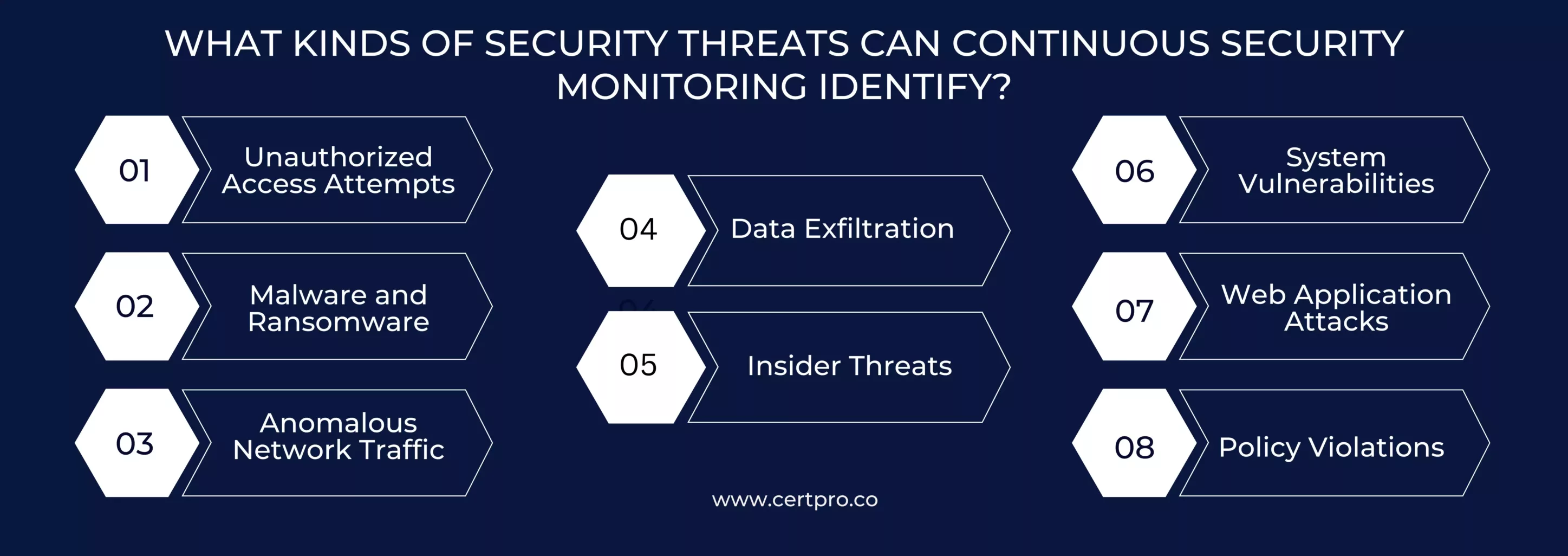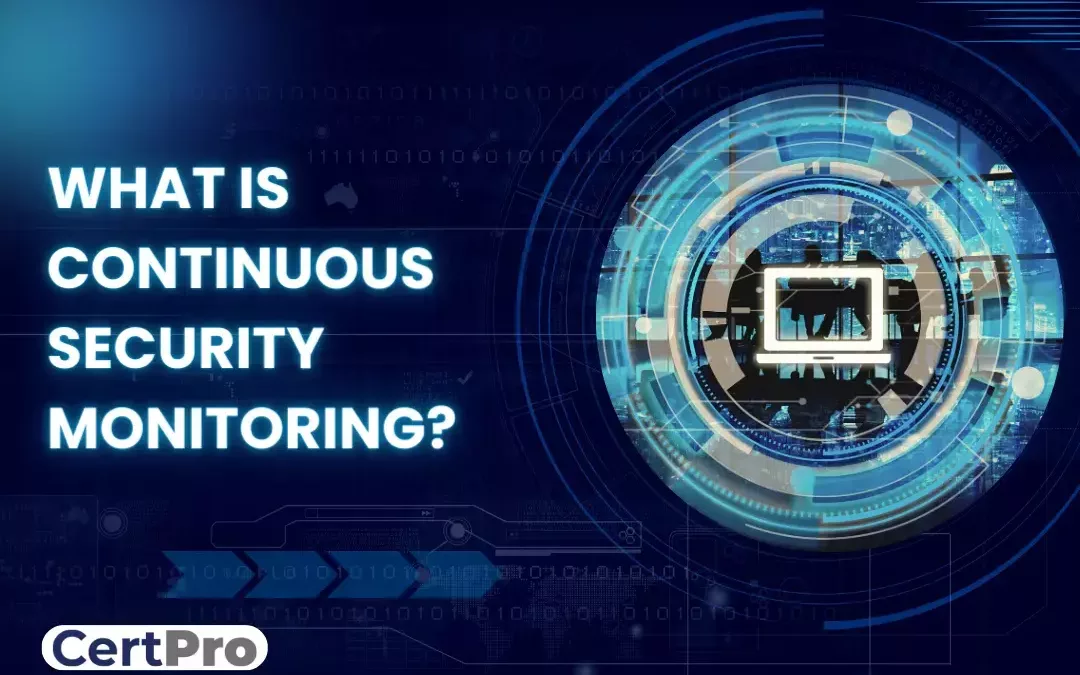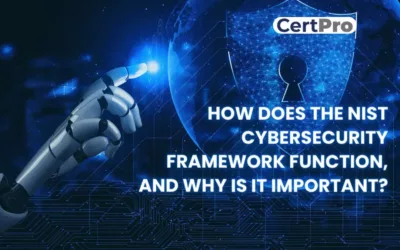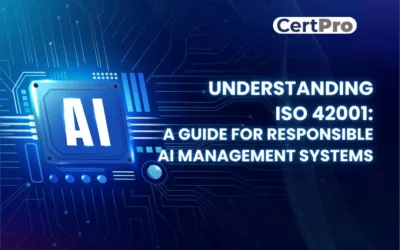When it comes to cybersecurity, Continuous Security Monitoring (CSM) is a dynamic and proactive approach that keeps up with the constantly changing dangers posed by the internet. CSM, a critical tool, automatically monitors information security controls, vulnerabilities, and various cyber threats, empowering firms to make well-informed risk management decisions.
Organizations seek real-time visibility into security misconfigurations, vulnerabilities, and indicators of compromise within their networks and infrastructure in today’s complex digital environment. The traditional protectors of cybersecurity, such as penetration testing, antivirus programs, and firewalls, are no longer impenetrable barriers against the strategies used by crafty attackers. No matter how reliable your infrastructure is, there will always be issues due to the constant development of zero-day exploits and the continuous discovery of vulnerabilities to the Common Vulnerabilities and Exposures (CVE).
Even though information security policies aim for top-notch standards these days, 81% of data breaches still succeed in getting over traditional security measures by using stolen or weak passwords, according to a Verizon survey. As businesses become more aware of this vulnerability, they are increasingly using continuous monitoring solutions. These are not only a great source of security intelligence, but they can also be used to find compromised credentials and exposed data in the vast open, deep, and dark web domains. This is evidence of how increasingly sophisticated defenses like UpGuard BreachSight are helping modern businesses strengthen their digital defenses.
WHAT IS THE SIGNIFICANCE OF CONTINUOUS SECURITY MONITORING?
Continuous Security Monitoring is vital because it enables firms to examine their entire security framework regularly, assuring compliance with internal information security regulations in everyday operations and times of change. In today’s world, almost all firms rely on technology for critical activities. As a result, the capacity to properly supervise this technology and ensure its confidentiality, integrity, and accessibility is critical to accomplishing its objectives.
The following five trends highlight how crucial Continuous Security Monitoring is becoming:
1. Increasing Complexity of Cyberthreats: The increasing complexity of cyber dangers, such as attacks with ransomware and advanced persistent threats (APTs), highlights the critical need for continuous monitoring. This emphasizes how important it is to have constant surveillance in order to recognize and counter the dynamic tactics used by attackers. Continuous monitoring is crucial since cyber dangers are dynamic, allowing firms to stay alert and respond quickly to new threats. It acts as a preventive defensive system, guaranteeing a prompt reaction to the dynamic environment of online threats.
2. Cloud Adoption: With the increasing integration of cloud services by enterprises, they must monitor their cloud environments continuously. This includes ensuring the security of cloud data, apps, and infrastructure and proactively addressing the unique problems that come with cloud security. In order to protect digital assets from potential threats and maintain their resilience in the dynamic and interconnected world of cloud computing, continual monitoring is vital when adopting cloud computing.
3. Regulatory Compliance Requirements: Continuous monitoring is essential due to the dynamic shift in legal frameworks, which is characterized by increasingly strict data protection and privacy rules. For enterprises, this continuous monitoring is essential because it guarantees adherence to compliance requirements, reduces the possibility of fines, and protects sensitive data in response to changing legal requirements. Continuous monitoring is a proactive strategy that helps firms maintain the integrity of their data management procedures while navigating the complicated regulatory environments in light of these evolving needs.
4. Supply Chain Risks: Within the complex network of interconnected supply chains, companies are vulnerable to security threats originating from third-party vendors. In order to reduce these hazards, continuous monitoring is essential. It is an essential tool for locating and quickly resolving possible security problems in the supply chain, which helps to avoid the risk of chain reaction breaches that could have a negative effect on several organizations. Organizations can strengthen their resistance to possible dangers arising from their interconnected network of partners and suppliers by means of careful and ongoing oversight.
5. Increased Data Volumes: Businesses must handle and safeguard ever-larger information repositories as the amount of data increases exponentially. Under these circumstances, ongoing surveillance becomes an absolute must. The ability to go through massive amounts of data is essential for identifying possible security concerns. Organizations may ensure a proactive and effective approach to data protection in the dynamic landscape of growing cyber hazards by continually monitoring and responding to emerging threats.
WHAT ARE CONTINUOUS SECURITY MONITORING’S FUNCTIONAL PROCESSES?
Continuous Security Monitoring (CSM) is a dynamic methodology that provides real-time insights into a company’s security posture in order to combat growing cyber threats. According to the National Institute of Standards and Technology’s (NIST) SP 800-137, CSM entails the following:
- Maintaining situational awareness across the organization and its vendor ecosystem.
- Understanding threats and their activities.
- Assessing all security controls.
- Collecting, correlating, and analyzing security-related information.
- Communicating actionable security status across all organizational tiers.
- Actively managing risk through integration with information security and risk management frameworks.
Businesses use technology to do regular checks according to predetermined standards. They create a strong Continuous Security Monitoring (CSM) program by utilizing data from automated scanning and existing security procedures. This continual approach adjusts to the changing threat landscape, ensuring constant monitoring across the company. Regular evaluations improve relevance by boosting asset visibility and understanding of potential hazards.
In practice, CSM tools of various modalities integrate effortlessly with organizational data systems. They run systematic scans against their knowledge base in order to uncover anomalies, vulnerabilities, and potential breaches. The data gathered enables enterprises to make informed risk response decisions, thereby continuously improving the effectiveness of their security policies. In essence, Continuous Security Monitoring has evolved from a simple compliance checkbox to a proactive, data-driven approach that allows enterprises to stay ahead of cyber attacks and respond quickly to emerging dangers.
WHAT KINDS OF SECURITY THREATS CAN CONTINUOUS SECURITY MONITORING IDENTIFY?
Continuous Security Monitoring (CSM) is a proactive defense in the face of a constantly changing threat landscape in the field of cybersecurity. There are various things CSM can do, such as responding fast to cyber threats like malware and phishing, keeping an eye on identity permissions all the time, spotting weaknesses in cloud workloads and systems, and lowering the risks linked to insider threats, unauthorized access, compromised credentials, and potential data breaches. Beyond just identifying threats, CSM plays a critical role in correcting infrastructure weaknesses, guaranteeing compliance, and strengthening overall security postures. This all-encompassing strategy highlights CSM as a critical component in protecting businesses from a wide range of dynamic security threats.
1. Unauthorized Access Attempts: Frequent monitoring is good at spotting unusual login habits, such as brute force attacks, several failed attempts, or logins from unexpected places. Organizations can quickly identify possible security issues and strengthen their defenses against unauthorized access by closely examining such trends.
2. Malware and Ransomware: Malware and ransomware can be found by carefully monitoring, observing patterns in behavior, and recognizing known malicious signatures. By taking a proactive stance, organizations are better equipped to stop or lessen the effects of malicious software on their systems and data because they can quickly identify and address such threats.
3. Anomalous Network Traffic: Constant observation is useful for identifying anomalous network activity, such as sudden bursts in data transfer or communication with known malicious IP addresses. With the help of this capability, companies may quickly identify any security threats and take appropriate action to stop or lessen the effects of malicious activity on their networks.
4. Data Exfiltration: Data transfers and access patterns can be actively monitored to detect abnormalities, such as unexpected or unusual data moves, quickly. This alertness is essential for spotting possible illegal efforts to steal confidential data, enabling companies to take swift action and protect their priceless information from possible security lapses or illegal access.
5. Insider Threats: The continual surveillance that continuous monitoring offers is essential for spotting unusual behavior from staff members or users. This may point to possible insider dangers, like illegal access to private data or peculiar usage habits of data. Organizations may identify and reduce insider risks quickly through constant monitoring, strengthening overall security protocols, and safeguarding confidential data.
6. System Vulnerabilities: Continuous monitoring is adept at spotting signs of attempted exploitation of known vulnerabilities in systems or software. Organizations can increase their defenses against hostile actors seeking unauthorized access or attempting to undermine software and system integrity by swiftly recognizing and fixing security concerns.
7. Web Application Attacks: Constant monitoring is very good at identifying unusual patterns or behaviors in online applications, which may indicate attempts to launch attacks or exploit vulnerabilities. By stopping attacks that try to compromise integrity or exploit vulnerabilities, this vigilance enables businesses to take prompt action, bolstering defenses and guaranteeing the security of web applications.
8. Policy Violations: Continuous monitoring is adept at spotting activities that breach security policies, such as installing unauthorized software, accessing restricted resources, or failing to comply with security guidelines. This capability guarantees that businesses notice and manage policy violations as soon as they occur, increasing their security and reducing risks from non-compliant behavior or unauthorized actions in their systems.

HOW TO IMPLEMENT CONTINUOUS SECURITY MONITORING INTO PRACTICE
Continuous security monitoring, or CSM, is essential for strengthening your organization’s defenses against dynamic cyberattacks. Modern technologies and human-centered methods create a strong and all-encompassing cybersecurity framework. This integration guarantees higher security and preparedness to face the ever-changing cybersecurity situation.
1. Define and Categorize Digital Assets: Carefully evaluate your digital assets and group them according to importance before you start the implementation process. This risk-based strategy creates a customized security plan, with a special emphasis on sensitive data procedures such as IT onboarding, HR onboarding, and access management. It enables a risk-centric perspective, enhancing the effectiveness of security measures.
2. Select Appropriate Processes and Tools: Selecting the appropriate instruments and procedures is critical to your strategy’s success. There are several CSM programs out there, and they all have different functionality. Select a program that performs all possible threat mitigation tasks, including vulnerability scanning, malware detection, and real-time threat analysis. To simplify your compliance program, think about integrating compliance automation tools like Sprinto. This puts your company in an efficient audit-ready position by guaranteeing compliance with framework standards, automating compliance duties, and monitoring controls in real-time.
3. Facilitate Continuous Evaluation Processes: Maintaining constant vigilance over all endpoints is essential to protecting your data from cyberattacks. Addressing insider risks at the same time is as important. Set up procedures that specify how staff members interact with data in order to systematically spot odd behavior and any dangers. This proactive approach improves your capacity to successfully mitigate security threats.
4. Regular Updates and Third-Party Monitoring: Policies should be scheduled and regularly updated to be up-to-date with the latest developments in cybersecurity and compliance standards. Make sure the policies in your company are in line with general security standards and that they are reviewed and updated as necessary. Update your software and application systems, and use security updates to make your system more secure overall. Establish guidelines and procedures for outside parties wishing to access your network. Utilizing CSM, keep an eye on these outside processors and service providers to reduce the dangers involved.
5. Prioritize Employee Training: A key component of tackling the ever-changing cybersecurity scenario is employee training. Organizations emphasize workforce education through frequent training sessions because they understand that sophisticated tools alone are insufficient. The purpose of these trainings is to enlighten staff members about policies, threats, and their responsibilities as stewards of the organization’s security. This proactive strategy cultivates a culture that prioritizes security, enabling staff members to adhere to best practices and improve their capacity to address security-related issues.
WHAT ARE THE BENEFITS OF CONTINUOUS SECURITY MONITORING?
Organizations are adopting Continuous Security Monitoring (CSM) solutions in the present business environment to strengthen their cybersecurity strategies against possible threats. Early threat identification, proactive risk management, and effective compliance assurance are just a few benefits of CSM. When taken as a whole, these advantages improve an organization’s resilience and readiness to handle ever-changing cybersecurity circumstances.
1. Early Threat Detection: With the help of continuous security monitoring (CSM), which enables immediate monitoring, enterprises can quickly detect and address cyber threats and vulnerabilities. This covers situations where a hacker circumvents data security measures or a reliable insider unintentionally divulges private information, giving in to social engineering techniques like spear phishing, phishing, or whaling.
2. Risk Management: keeps an eye on security threats continuously, helping businesses identify, rank, and take proactive measures to resolve possible security issues. Ongoing security monitoring facilitates strategic planning for corrective actions by assisting in the identification and ranking of security risks and weaknesses. Besides, prompt danger alerts enable businesses to effectively manage their cybersecurity protection.
3. Compliance Assurance: Compliance frameworks like ISO 27001, SOC2, HIPAA, PCI DSS, NIST, and GDPR require organizations to use Continuous Security Monitoring (CSM) for ongoing adherence to security requirements. Integrating CSM into processes ensures consistent compliance.
4. Enhanced Visibility: Expands understanding of the IT environment to include user access and network security. Because of this increased visibility, firms are better able to view their security posture holistically, which makes it easier to identify possible weaknesses and develop effective security plans.
5. Third-Party Risk Mitigation: Reduces the risks associated with supply chain partners and third-party vendors by continuously observing their security posture and possible weaknesses. By taking a proactive stance, companies can make sure they are always on the lookout for and quickly resolve any security issues that might surface within their wider partner network.
FAQ
What functional processes does Continuous Security Monitoring involve?
Continuous Security Monitoring involves maintaining awareness, assessing controls, analyzing security data, and actively managing risk. It integrates with information security and risk management frameworks for comprehensive threat management.
What kinds of security threats can Continuous Security Monitoring identify?
Continuous Security Monitoring identifies unauthorized access, malware, anomalous network activity, data breaches, insider threats, system vulnerabilities, web attacks, and policy violations, which is crucial for correcting weaknesses and enhancing security postures.
Why is the human element crucial in Continuous Security Monitoring?
Recognizing the human factor in cybersecurity is crucial for fostering a security-first culture. Frequent training empowers employees to actively engage in the organization’s security framework, effectively addressing issues and enhancing overall cybersecurity.
What are the benefits of Continuous Security Monitoring?
Continuous Security monitoring offers early threat detection, proactive risk management, compliance assurance, improved IT visibility, and third-party risk mitigation. Enhances organizational resilience and readiness for evolving cybersecurity challenges.
How does Continuous Security Monitoring align with compliance requirements?
Continuous Security Monitoring aligns with ISO 27001, SOC2, HIPAA, PCI DSS, NIST, and GDPR. It’s essential for ongoing compliance, ensuring consistent adherence to security standards by integrating CSM into organizational operations.

About the Author
RAGHURAM S
Raghuram S, Regional Manager in the United Kingdom, is a technical consulting expert with a focus on compliance and auditing. His profound understanding of technical landscapes contributes to innovative solutions that meet international standards.
HOW DOES THE NIST CYBERSECURITY FRAMEWORK FUNCTION, AND WHY IS IT IMPORTANT?
Emerging cyber threats make cybersecurity an essential consideration for organizations handling and managing data. In this regard, the NIST cybersecurity framework applies to improving your cybersecurity program. It is a set of guidelines that helps improve your...
UNDERSTANDING ISO 42001: A GUIDE FOR RESPONSIBLE AI MANAGEMENT SYSTEMS
The invention of artificial intelligence (AI) has changed the operational processes of many industries. However, the rapid growth of technology increases ethical, security, and privacy-related concerns. Therefore, the International Organization for Standardization...
EUROPEAN UNION’S ARTIFICIAL INTELLIGENCE ACT: HOW THIS GROUNDBREAKING LAW AFFECTS YOUR BUSINESS
Nowadays, Artificial Intelligence (AI) is transforming our lives exceptionally well. AI is now streamlining healthcare services, providing virtual assistance, and fulfilling queries. Technologies have boons and curses. Similarly, AI creates many concerns about...




